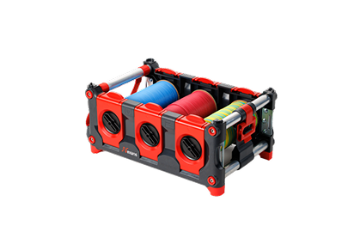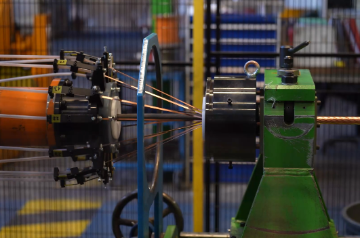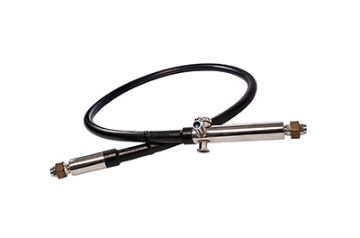- Markets
- Products
- Services
- News
- Tools & Resources
- About Nexans
- Search
- Contact us
- Compare
- Sign in
Q&A Fire Safety
Decree of May 17, 2024
The decree of May 17, 2024, changes cable usage rules in ERP and high-rise buildings. Find a clear summary of its implications and how to stay compliant.
The classification of building types is a key factor. Regulations may fall under the responsibility of different ministries, each overseeing the development of their respective provisions.
Currently, there is no harmonization in place — though it may be considered in the future.
However, in Workplace Establishments (ERT), even though the current requirement is still Eca, nothing prevents the project owner from specifying a higher performance level. The same applies to residential buildings.
New Cable Classification in PABs and HRBs:
Cables classified as Eca are no longer permitted for new PABs or HRBs, or for new cable installations within them. They must be replaced by cables classified as Cca-s2,d2,a2.
This new classification ensures better fire resistance and reduced emission of smoke and hazardous substances.
The decree took effect on May 23, 2025, which is one year after its publication in the Official Journal.
Application
Learn where Nexans FR-N1 X6G3 PROTECT cables can be installed—whether in new constructions or renovations—and how they comply with labor code regulations.
The new regulation will apply to all types of work on PABs and HRBs that require the replacement of electrical cables, as long as the work authorization requests or building permits are submitted after May 23, 2025.
Yes, any electrical addition or modification must comply with the new regulation, even if no renovation application is submitted.
Yes, the regulation makes no distinction based on cable cross-section.
Yes, it applies only to France. Other European countries, such as Spain and Sweden, had already strengthened their requirements since the implementation of the CPR in 2017.
The classification of the building type is a key factor. In fact, regulations may fall under the responsibility of different ministries, each overseeing the evolution of specific provisions. Currently, there is no harmonization in place. It may be considered in the future. However, in Workplace Establishments, even though the current requirement is still Eca, nothing prevents the project owner from requiring a higher performance level. This also applies to residential buildings.
The key point is to determine whether cables within the building (PAB, HRB) that fall under the definition of the CPR are considered part of a fixed installation. If so, the cables will need to meet the required classification level: Cca-s2,d2,a2.
All underground parking areas in PABs and HRBs will have to comply with the requirements of the new regulation. The electrical infrastructure must therefore use cables with at least a Cca-s2,d2,a2 classification, and Cca-s1,d1,a1 when the infrastructure is managed by ENEDIS. The Nexans EVCI range already meets these requirements.
All PABs and HRBs are affected by this regulatory change, regardless of their type or category.
Only the extensions will be taken into account. There will, of course, be no requirement to replace previously installed cables that are still functional.
Yes. It applies to all projects for which a work authorization request is submitted from May 2025 onward, whether it concerns new construction or renovation.
The classification is determined at the time of construction or during a renovation. It is stated in the Safety Report submitted with the building permit or work authorization request and confirmed by the Safety Commission if consulted.
Yes. According to Article R. 4211-2 of the French Labor Code, a Workplace Establishment (ERT) includes all places intended to accommodate workstations, including offices.
All cables installed before May 23, 2025, will remain as they are. They will gradually be replaced by the new Nexans FR-N1 X6G3 PROTECT generation in PABs and HRBs as part of new projects approved through a work authorization request or building permit submitted after May 23, 2025.
Similarly, all projects with a work authorization request or building permit submitted before May 23 may still be carried out using the previous requirements—minimum Eca—meaning cables like Nexans R2V can still be used.
Any cable with a Euroclassification higher than the minimum required by the relevant building regulations can be installed. In the case of Workplace Establishments that are not HRBs, since the minimum required classification is Eca, the Nexans FR-N1 X6G3 PROTECT is therefore perfectly suitable.
As soon as the work takes place in PABs or HRBs, cables with at least a Cca-s2,d2,a2 classification must indeed be installed. Therefore, for the low-voltage part, the new Nexans FR-N1 X6G3 PROTECT cable will meet the requirements.
Nexans FR-N1 X6G3 PROTECT Cable
This section outlines the features of the Nexans FR-N1 X6G3 PROTECT cable, its fire performance (Cca-s1,d1,a1), the standards it meets, and the environments it’s designed for.
FR-N1X1G1 Cable
Explore the FR-N1X1G1 cable, its technical specifications, how it compares to the Nexans FR-N1 X6G3 PROTECT, and when it’s still a relevant solution.
Yes, the FRN1X1G1 cable, offering higher fire performance than the FRN1X6G3, can be selected and installed if it meets the requirements of the regulation, particularly the Cca-s2,d2,a2 classification.
In reality, it’s not the cable type that matters, but its Euroclass rating.
That said, the new Nexans FRN1X6G3 cable has installation characteristics similar to the R2V, which will simplify its implementation.
The NF C32-323 standard remains in effect and continues to apply under current regulations for certain specific uses.
For example, Electric Vehicle Charging Infrastructures (EVCI) may require the use of FR-N1X1G1 cables when the system is covered by the NF C14-100 standard (ENEDIS specifications).
CR1C1
CR1C1 cables are often compared to newer Cca-classified cables. This section helps you understand their properties, fire classification, and current applications.
No, the CPR regulation does not yet apply to fire-resistant cables in France or across the EU.
These cables therefore retain their CR1-C1 classification until a specific CPR regulation for fire resistance comes into effect.
As such, for fire safety circuits (detection, alarms, emergency systems, etc.), the CR1-C1 classification remains the applicable standard.
No, the FR-N1X6G3 cannot replace a CR1-C1 cable, as they do not serve the same purpose.
CR1-C1 cables are designed to continue powering safety circuits even in the event of a fire (for a predetermined duration). They are considered "fire-resistant," a critical feature for safety systems such as detection, alarms, and evacuation.
Others cables
Beyond the main models, other cables may suit your projects. Learn about their benefits, certifications, and specific use cases here.
If these cables are installed in a PAB or HRB, they must have at least the Cca-s2,d2,a2 classification.
All cables installed in PABs and HRBs must have a performance rating of at least Cca-s2,d2,a2, except for fire-resistant cables such as CR1-C1.
For insulated conductors, the recommended ranges will be H07Z1-U and H07Z1-R.
The CPR regulation applies to all construction products permanently installed in buildings.
For electrical panels like TGBTs, the applicable regulation must be followed based on the building type.
In the case of PABs and HRBs, insulated conductors must also meet at least the Cca-s2,d2,a2 classification.
In fire safety systems, it is common to use fire-resistant cables such as CR1-C1 in certain areas. For these types of cables, the new regulation does not introduce any changes, and they will continue to be used.
For other parts of the circuit that are not built using CR1-C1 cables, the new regulation applies. Regulatory requirements always take precedence over normative ones.
Unfortunately, the requirement for Dca-classified cables in fire safety systems was defined prior to the drafting and publication of the new regulation. The NF S standards will eventually need to be revised to align with the updated regulatory framework.
The regulation does not apply solely to power cables. It also requires data cables to meet the Cca-s2,d2,a2 classification.
Yes, all cables installed in a PAB or HRB are subject to the new regulation.
If a Medium Voltage cable is used as part of a fixed installation within these buildings, it must comply with the new classification requirements.
Accessories
Successful installations also depend on the right accessories: find components compatible with Nexans FR-N1 X6G3 PROTECT cables and compliant with standards.
No, accessories and cable trays are not covered by the new provisions. Therefore, their fire safety performance requirements remain unchanged.
Differences Between Cca Cables
Not all Cca cables are the same. This section explains the different sub-classes (s, d, a), their impact on fire safety, and key selection criteria.
A conversion table was established in the decree of October 15, 2014, amending the decree of July 21, 1994, regarding the classification and certificate of conformity for the fire behavior of conductors and electrical cables, the accreditation of testing laboratories, and the transitional provisions for using European fire reaction classes.
Considering that halogen-free Cca Euroclass is the baseline fire performance equivalent to C1 without halogen-releasing compounds, we can conclude that halogen-free Cca is equivalent to C1 SH (without halogen).
The differences lie in the additional parameters, with the main distinction concerning the “d” rating, which refers to flaming droplets or particles.
In the case of the new specification, the regulation does not impose a strict requirement on this parameter and refers to the lowest performance level. This means that cables exposed to fire may produce flaming droplets or particles that could fall.
This parameter is typically important when assessing the risk of secondary fire outbreaks or the danger of falling droplets/particles affecting people evacuating or emergency responders during an intervention.
Easycalc
Easycal is our calculation tool to help you quickly choose the right cable based on your electrical needs, environment, and applicable regulations.
EasyCalc will be updated to incorporate these new classifications and provide accurate sizing recommendations for electricians and installers.
Our websites
Select your country to find our products and solutions
-
Africa
- Africa
- Ghana
- Ivory Coast
- Morocco
- North West Africa
- Americas
- Asia
- Europe
- Oceania






